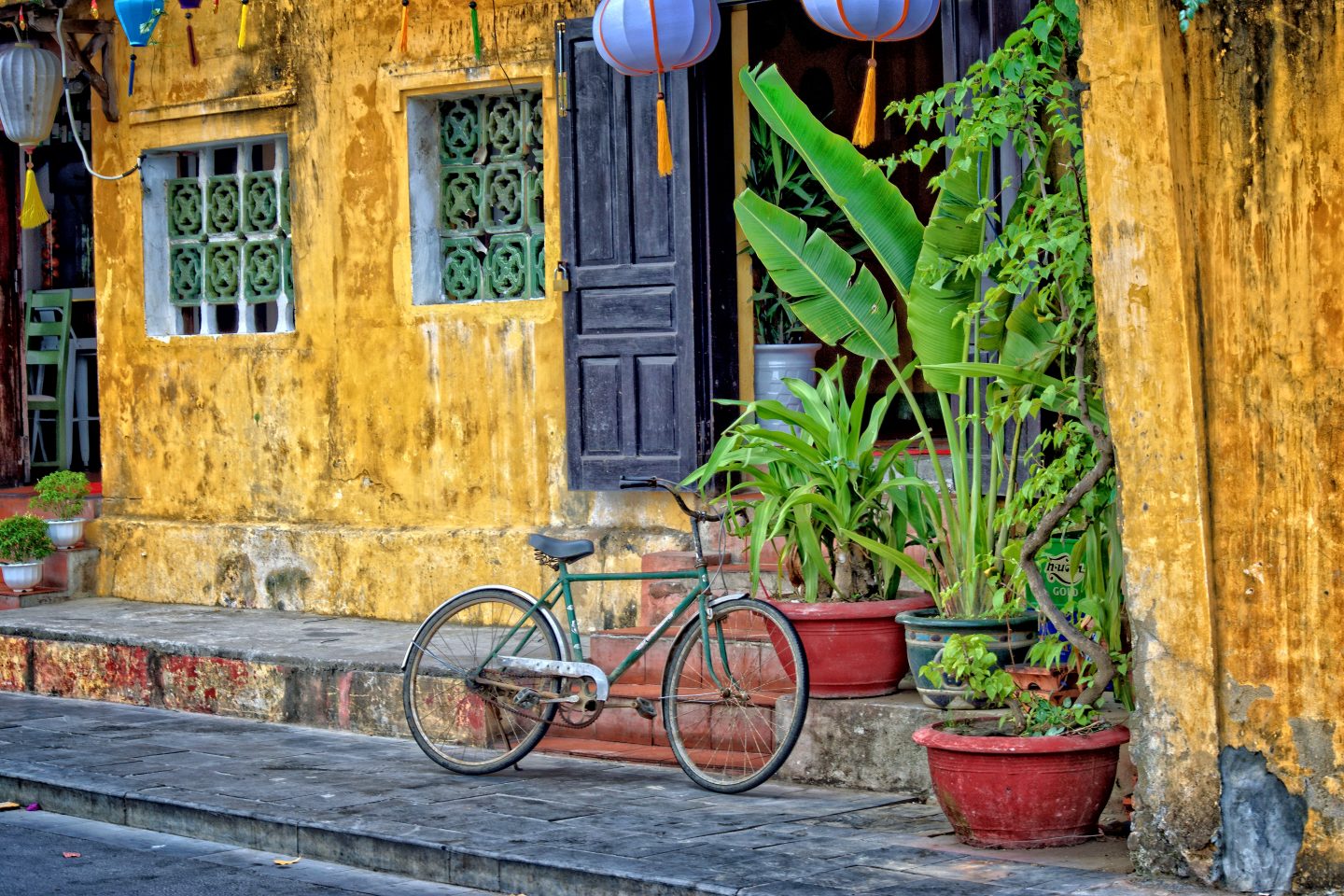The former 16th century trading port of Hoi An is the tourist hotspot of Vietnam. It’s picture perfect – lined with yellow shophouses, decorated with lanterns and home to ancient bridges and temples.
Although the centre is often busy, it’s easy to escape to the the surrounding countryside of mountains, rivers, beaches and rice paddies. Hoi An is an irresistible mix of culture, coast and cuisine.
Here’s our top 5:
The Old Town:
Hoi An Old Town is a UNESCO heritage site bursting with charm and history. Many streets only allow bikes, or are fully pedestrianised, making it a relaxing place to wander and explore. It’s easy to lose the crowds amongst the colonial buildings, shophouses and canals. Historical must sees include: the 18th century Japanese Covered bridge, the Chinese Assembly Halls and the Guan Yin Temple. But for most, the main attraction of Hoi An is the iconic lanterns, hip boutiques and cool cafes.
Tips:
Spend time on the Japanese bridge. As it’s part of a main road, most visitors just cross it and don’t stop and appreciate it. There’s a small Buddhist temple mid-bridge and make sure you walk down by the side, towards the river, for a view of the carved roof and ornate exterior.
Avoid visiting Hoi An in October and November, as the town often experiences significant flooding putting many of the Old Town’s streets under at least a foot of water.
The Marble Mountains:
These five limestone and marble hills may well be one of the most under-rated attractions in Vietnam. Half an hour away from Hoi An, we visited them by chance and they now top our Vietnam bucket list. Only one mountain, Mount Thuy, is open to tourists and it’s often busy. Once you leave the lift, the top is a maze of tunnels, caves and lookouts filled with spectacular Buddhist and Hindu shrines. There are 5 main caves, 4 pagodas and several lookouts – the best of which requires a scramble up through a rock tunnel. The signs and maps aren’t very clear, so it’s easy to miss some caves. Make sure you see Huyen Khong cave, the most spectacular and atmospheric cave. You descend dark stairs and enter an incense filled half lit space. It was used as a Viet Cong hospital during the war and contains a selection of shrines. Also, Tang Chon cave with its standing and sitting Buddhas is one not to miss, but is difficult to find.
Tips:
Take the lift up and walk down. Keep checking the map or you will miss out and wear non slip shoes as a few sites require scrambling through narrow tunnels.
An Bang Beach:
Don’t miss out on Hoi An’s beaches. They may not be as famous as other beaches in Vietnam, but they have the same clear blue water, endless white sand and a view of the Cham Islands. The local beach actually runs 18 miles from Hoi An to Danang and is split into sections. The nearest is Cua Dai, which is fine but heavily eroded, so we suggest An Bang 3 kilometres further north. The wide, white sands are lined with trees and cafes where you can usually get a lounger for free if you have a few drinks and eat a meal. We love Soul Kitchen – it’s right on the beach and has a large, relaxing eating area.
Tips:
The beach gets busy late afternoon as families come to cool off after work. If you want local atmosphere (like us) stay till then, if you prefer the quiet visit earlier. An Bang is also a good alternative base to Hoi An in the area.
The Night Market:
Asia is full of night markets, but Hoi An’s is one of our favourites. Located on the island of An Hoi, it’s easily reachable by foot bridge over the Thu Bon River from the old town. It’s based in the back streets, but spills on to the beautiful (and constantly instagrammed) promenade lit by hanging and floating lanterns. As well as the inevitable tourist trinkets, it’s a good place to buy lanterns, clothes and jewellery … and there’s lots of delicious street food on offer. It’s impossible to avoid lanterns in Hoi An. By the night market and the riverside you can buy floating lotus shaped lanterns to release on the river to bring good luck and happiness. You can also upgrade to a boat trip for this. The glowing coloured lanterns on the river are spectacular.
Tips:
Watch your bag and haggle. Time your visit for the monthly full moon festival if you want to experience even more lanterns floating on the river.
Mango Mango:
If you fancy a splurge then this is the place to do it. Hoi An is home to amazing food, but Mango Mango was home to our best meal in Vietnam, and possibly ever. It’s a sister restaurant to The Mango Rooms in the Old Town and specialises in Vietnamese fusion cuisine. Based on the riverfront, on An Hoi island, chef Tran Thanh Duc delivers phenomenal food. Watch the food prep in the open kitchen or sit on the balcony and look across the lantern lit river to the Japanese Bridge.
Tip:
Splash out on a signature cocktail, it won’t disappoint.
